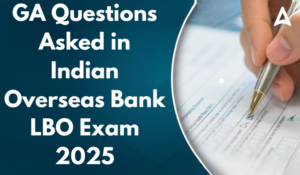Reasoning Questions for IBPS RRB 2019
Reasoning Ability is a crafty section. With each passing year, all the organizations are increasing the level of complexity of the questions that are asked in either prelims or mains. It eventually affects the number of question one can usually attempt. But this section is based on logic and rules can be aced if practised well enough. The only way to achieve this ambitious goal is by practising continuously with dedication. So to prepare you with best tools for the finals, here is today’s Reasoning Quiz based on the study plan and the exact same pattern of questions that are expected to be asked in IBPS RRB 2019. Keep Practicing. All the best
Directions (1-5): Study the information carefully and answer the questions given below.
Eight persons P, Q, R, S, T, U, V and W are living eight different floors of a building but not necessary in same order. (Ground floor is numbered 1 and top floor is numbered as 8).
R lives at 4th floor. Two persons live between R and Q. S live immediately above U. Two persons live between T and P who lives above R. Neither P nor T live at top floor. Q lives below R. W lives above U.
R lives at 4th floor. Two persons live between R and Q. S live immediately above U. Two persons live between T and P who lives above R. Neither P nor T live at top floor. Q lives below R. W lives above U.
Q1. Who among the following lives on topmost floor?
V
S
U
Q
None of these
Q2. V lives on which of the following floor?
1st
3rd
4th
5th
None of these
Q3. How many floors are between U’s floor and T’s floor?
Four
None
Three
Two
None of these
Q4. Four of the following five are alike in certain way based from a group, find the one that does not belong to that group?
W
U
T
V
R
Q5. How many floors are in between the one who lives immediately below S and the one who lives immediate below T?
Two
Three
One
Five
None of these
Directions (6-9): Study the following arrangement carefully and answer the questions given below.
9 D H 8 I % T @ I J M Q 3 © R 4 P W $ Y 2 A E 6 # U K 5 U 1 & Z N
Q6. Which of the following element is the seventh to the left of the fifteenth from the left end of the given arrangement?
I
T
@
J
None of these
Q7. How many such numbers are there in the given arrangement, each of which is immediately preceded by a consonant and immediately followed by a vowel?
None
One
Two
Three
More than three
Solution:
H8I, Y2A, K5U
Q8. How many such symbols are there in the given arrangement, each of which is immediately followed by a letter and immediately preceded by a number?
None
One
Two
Three
More than three
Solution:
3©R, 6#U, 1&Z
Q9. How many such consonants are there in the given arrangement, each of which is immediately preceded by a consonant and immediately followed by a symbol?
None
One
Two
Three
More than three
Solution:
PW$
Q10. Which of the following element is 18th from right end of the series?
4
R
P
©
None of these
Directions (11-15): In these questions, relationship between different elements is shown in the statements. These statements are followed by two conclusions:
Q11. Statements: K ≤ M < B ≥ W < R ≥ S = T
Conclusion:
I. R > K
I. R > K
II. K ≤ R
If only conclusion I follows.
If only conclusion II follows.
If either conclusion I or II follows.
If neither conclusion I nor II follows.
If both conclusion I and II follow.
Solution:
I. R > K(False) II. K ≤ R(False)
Q12. Statements: R > L ≤ U < N > P = T > E
Conclusion:
I. N > L
I. N > L
II. P > E
If only conclusion I follows.
If only conclusion II follows.
If either conclusion I or II follows.
If neither conclusion I nor II follows.
If both conclusion I and II follow.
Solution:
I. N > L(True) II. P > E(True)
Q13. Statement: W ≥ D = O ≥ T ≥ E ≥ S < R
Conclusions:
I. D > S
I. D > S
II. S = D
If only conclusion I follows.
If only conclusion II follows.
If either conclusion I or II follows.
If neither conclusion I nor II follows.
If both conclusion I and II follow.
Solution:
I. D > S(False) II. S = D(False)
Q14. Statement: M ≤ N > Y = T > O ≥ P = Q
Conclusions:
I. N ≥ P
I. N ≥ P
II. Q < Y
If only conclusion I follows.
If only conclusion II follows.
If either conclusion I or II follows.
If neither conclusion I nor II follows.
If both conclusion I and II follow.
Solution:
I. N ≥ P(False) II. Q < Y(True)
Q15. Statement: U ≤ V < W =X < Y ≥ T ≤ I
Conclusions:
I. Y > U
I. Y > U
II. T > V
If only conclusion I follows.
If only conclusion II follows.
If either conclusion I or II follows.
If neither conclusion I nor II follows.
If both conclusion I and II follow.
Solution:
I. Y > U(True) II. T > V(False)





 GA Capsule for SBI Clerk Mains 2025, Dow...
GA Capsule for SBI Clerk Mains 2025, Dow...
 The Hindu Review October 2022: Download ...
The Hindu Review October 2022: Download ...
 GA Questions Asked in Indian Overseas Ba...
GA Questions Asked in Indian Overseas Ba...


